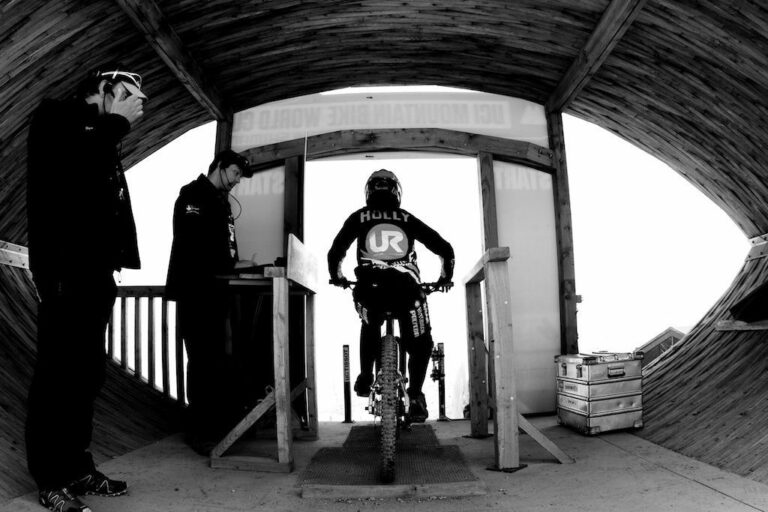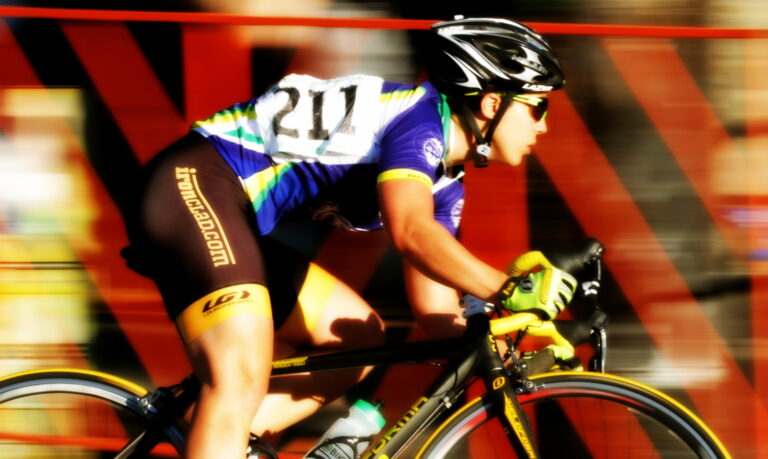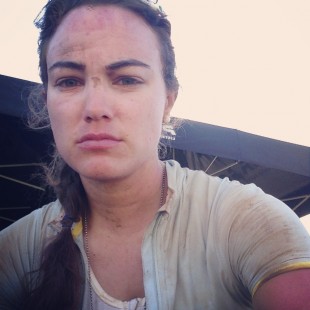
If you ride a bicycle more than a little, you’re more than a little likely to find yourself injured at least once.
Collyn Ahart delves into how she copes with riding through injury.
Apparently, you’re not a “real cyclist” unless you’ve broken your collarbone or suffer patella tendonitis of the knee.
In the space of a few months I’ve seen a variety of injuries hit my own social circle like wildfire. Achilles tendonitis for one, a broken hip for another, strained hip flexors, broken ribs, torn ligaments, and for myself, a severe case of patella tendonitis.
Injury can come from almost anywhere. Not enough stretching, not enough core strength, crashes, a poorly fitted bike, over-training, undertraining followed by over training, a wonky seat, a wonky bike (yes, bikes can get bent), wearing high heels off the bike, even the over-compensation that comes from the most minor of saddle sores can all cause some form of injury. But not all injuries are created equal.
Many professionals will race consistently throughout a season plagued by minor injuries. A concussion can take you off the bike (and your feet) for days at a time. Broken collarbones are annoying (or so I’m told), but they are also relatively easy to heal – some athletes able to start training again after only a few weeks off. But the most annoying of injuries are the ones involving tendons, ligaments and spinal injuries. All of which I seem to have.
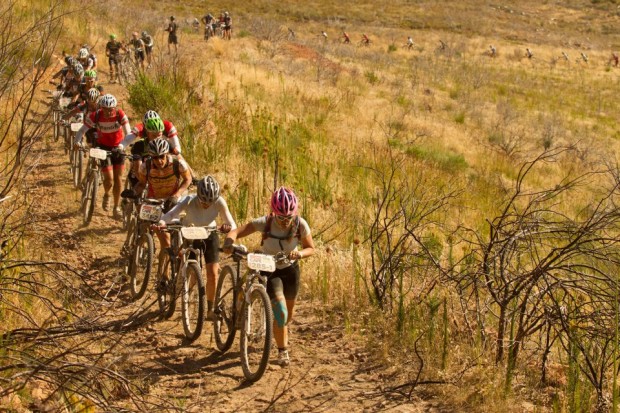
Figuring out the root of my injury is like detective work. Almost a year ago I followed a friend down a mountain bike trail called Deliverance. Too fast, I lost control of my bike, locked my brakes and went somersaulting over the handlebars, landing on my left shoulder and head.
I lost over 45 minutes of consciousness but was able to ride out (and straight into A&E), but I figured nothing was seriously damaged. Three days later I rode around Italy for 6 days, fueled by ibuprofen and Voltarol gel, but otherwise mobile. My back was stiff and it felt like I needed a chiropractor, but my legs seemed to be fine.
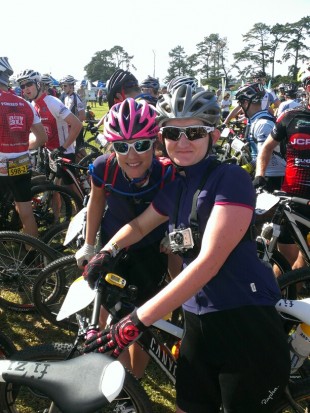
Fast-forward 5 months to February this year. I was training like a banshee for the Absa Cape Epic, but I’d left it all a bit late, only really training in earnest from the middle of December for a race in Mid-March. I felt strong, if a little stiff. I was putting out decent power, but never really felt myself. Something was off, my back was often sore, but I didn’t have time to think about it. Even after I’d taken a hard tumble deep in singletrack, I thought I was fine. I’d fallen hard onto my right pelvis; bruising shot up and down my right leg and shadowed my knee, but I felt fine. What’s a little bruising?
A few days later I arrived in Nice for a week-long training camp, raring to go. But my enthusiasm didn’t last. Within three days I could barely walk. My right knee had swelled up and was painful even to sleep. Walking down steps – let alone cycling up a hill – was almost completely inconceivable. But I pushed on, I was in Nice! I was about to do the Cape Epic! I had to keep training!
By the time I arrived home again, I knew something was seriously wrong with my body. I booked myself a few appointments with an Osteopath to see what was wrong. He manipulated my legs, my hips, my back, my shoulders, and my feet. I was able to walk again, but in no less than a week I was headed off to South Africa for an eight-day mountain bike stage race, which, as I’d feared, came prematurely to an end.
The injury had criss-crossed my body. My left shoulder and spinal injuries had thrown out my right pelvis, which I was riding on with a shortened right leg for 5 months. This, in turn, put added strain on my ITB, the big, painful muscle running the external length of my femur. Crashing on my right hip threw the delicate balance I was treading out of sorts. Some heavy training and enthusiastic stretching ripped my already damaged tendons in my knee, and my overly tightened ITB pulled my patella to the right. When I bend my right knee, my kneecap tracks laterally, rather than straight up and down.
How to get over this? I’m still unable to ride completely without pain. There is no one right answer. I’ve taken loads of advice, but have gone with the rest, stretch, roller, ice-method. I’m off the bike with the exception of soft-pedaling, up to 90 minutes a few times a week. I’m getting a weekly sports massage to keep my pelvis and ITB soft, giving my kneecap a chance to heal. I know this season is a bit of a competitive right off, but I’m seeing it as a chance to re-check my body.
When I start training again, I will be starting from the ground up. My cardiovascular fitness will be down, I’ll be weak, I’ll struggle with hills I could tip-toe up no less than a year before. The biggest challenge will be mental.
The ego suffers more than the body, and I know I’ll find myself at the back of the group, struggling to hang on.
My clothes will be a little tighter than usual and it will be frustrating to start again, but it’s also an opportunity to do it right. I aim to stretch properly, to do the Pilates and the Yoga. To eat the right balance of food and not over-do it so I never feel the need to train harder than I should. It’s a chance to re-wire my brain around balance and get away from the yoyo rollercoaster of training in extremes and then letting myself go for a few weeks.
The hardest part of injury is being okay with being injured. You are not your body. You are not your watts. Find a little bit of peace within the breaks and tears, embrace the rest, start fresh, and keep your courage.


